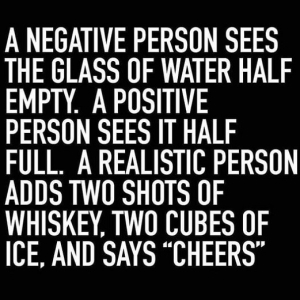Peter MALONE
2024
2024

2023 has left the world with much sadness and many problems: savagery in war, climate disasters, cost of living....
With St Francis of Assisi, we have our prayer and our motto for the New Year.

Every blessing for the coming year to our visitors to the MSC site, resuming today for the year, posts daily Monday to Friday and a weekend post.
May our Heart Spirituality be a source of courage, hope and joy.
Ho Ho… Ha Ha
Ho Ho… Ha Ha

Some moments of cheer for Christmas at the end of a hard year around our world,

Something for everyone,

for introverts, correct spellers, pun lovers, those ageing, good resolutions, and even dogs - and for realists with glasses half full or half empty.



and puns last

Rats of Tobruk, The
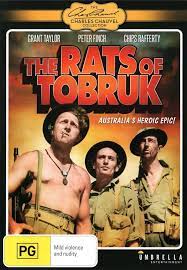
THE RATS OF TOBRUK
Australia, 1944, 96 minutes, Black-and-white.
Grant Taylor, Peter Finch, Chips Rafferty, George Wallace, Joe Valli.
Directed by Charles Chauvel.
Australia made very few feature films during World War II. There had been quite some activity, especially with director, Ken Hall during the 1930s but from 1939, resources were poured into the war effort.
Veteran husband and wife team, Charles and Elsa Chauvel, had moved into filmmaking in the 1920s. During the 1930s they tackled historical themes and First Nations themes in Heritage and Uncivilised. However, they were able to make a feature film, supporting the war effort, going back to the exploits of World War I, the lighthorsemen and the charge of the Sheba, the film 40,000 Horsemen.
The Chauvels researched the deploying of Australian troops in North Africa, the fight against Erwin Rommel and his advances through the desert, the Australians being settled in the Libyan town of Tobruk, besieged for many months, digging in, literally, and dismissed by the British broadcaster from Berlin, Lord Haw Haw, as rats. However, the nickname was taken as a badge of honour and the Australians in Tobruk have always been remembered as the Rats off Tobruk.
After preparing the screenplay and making it authentic, companies and the government provided the support for the filmmaking, desert scenes on the beach of Cronulla, Tobruk scenes built at Camden, and the final PNG sequences in Queensland.
Grant Taylor and Chips Rafferty had appeared in 40,000 Horsemen and were joined here by Peter Finch, British but growing up in Australia, appearing in radio drama and some films. Included in the cast were to comedians of the period, George Wallace who had appeared in his own films, very broad slapstick humour, and Joe Valli, with some eccentric humorous sequences.
A seriously abridged version, 68 minutes, was released in the US in the early 1950s and dismissed. The story was taken up by Hollywood in a sequel to film about Rommel, The Desert Fox with James Mason, The Desert Rats.
The film illustrates the Australian outback and stockman in the opening sequences (seen to advantage in 1946 with Chips Rafferty in The Overlanders), some touches of romance with Australian male reticence, a lot of mateship during the war, not underestimating the wounded and dead, and a continuation of the war during the film’s release in 1944 in Papua New Guinea.
- The impact of this film in 1944, World War II, the memory of Australian action in North Africa, the siege of Tobruk? Heroism, the blocking to the blitzkrieg Nazi attack, stopping Rommel? In the aftermath of the soldiers transferring to the war in New Guinea?
- The impact of the film decades later, a record of the events, a tribute, lest we forget, a portrait of Australian men at the time, Australian humour, vernacular? And changes since?
- The work of Charles and Elsa Chauvel, perspectives on Australian history? 40,000 Horsemen in World War I? For the war effort? This film and the war effort, an Australian production collaboration in a time when there was little Australian film production?
- The opening, the atmosphere of the stockmen, out with the cattle, the vast distances, the movement, the different terrains, passing through properties?
- The focus on Bluey, his leadership, on Peter from England and his observations, writing, taking notes, on Milo as the stockman, cheery, recognisable Australian image? Their friendships, the work?
- Bluey and the meeting with Kate, her expectations, the Australian male reserve, attracted, manner of speaking, the touch of detachment, her response? Peter and his observing the relationship, later the letters, writing letters, fostering the relationship with Bluey? And the romantic ending, Bluey and the war experiences, the effect on him, his return, Kate waiting for him? The marriage?
- News of the outbreak of the war, enlisting, the three finding themselves in Africa?
- The Australian locations for Libya, Tobruk, the desert, the Sydney Beaches, the Tobruk headquarters, Queensland locations for new Guinea?
- The situation in Africa, the attack of the Germans, defeating the British, the Allies? The role of the Australians, in Tobruk, the siege, over six months, the Australians holding, the impact of the battle sequences, the German advance, the defence, the strategy with the tanks, letting them through, capturing them? The prisoners of war?
- The situation in Tobruk, digging and the underground, the attacks, deaths, wounding, the military hospital, Peter being wounded, in the hospital, the encounter with Mary, the nurse, her being evacuated, correspondence, and the later bar sequence and the singing the song, Mary? The range of wounded men, Milo, rescuing Bluey, the head wound, in the hospital? The camaraderie amongst the men?
- Moving around Tobruk, the buildings, shops, souvenirs, the bar? The ordinariness?
- The comedy and the film, George Wallace, his screen persona, broad comedy, the barber, at work, wanting a transfer to Greece, friendship with the trio, the sequence of the officer falling asleep, George’s concern about him? The impact of the humour today, of its time?
- The comedy in the film and Joe Valli, Scotsman, the dialogue, imagining the birds, chasing them, his reappearing in the barbershop, the attempted shape, finding the birds?
- The role of the Rats of Tobruk, Lord Haw Haw and his broadcasts from Berlin, ridiculing the Australians and their style, calling them rats, and this becoming distinctive for them?
- The final time in North Africa, the fighting, Peter and his being wounded, the men gathering round him, his death? Leaving his manuscript?
- The sudden shock of Milo’s death?
- The return to Australia, the tickertape parade through the city? The commentary about the heroism? And listening
- Transition to the war in New Guinea, the Japanese, the jungle in the mud, the Japanese on the rockets, Bluey and the combat fight with the Japanese, his being rescued by the “Fuzzy Wuzzy” Angels”? The war continuing?
- And the happy finale with Bluey and Kate?
Family Switch

FAMILY SWITCH
US, 2023, 106 minutes, Colour.
Jennifer Garner, Ed Helms, Emma Myers, Brady Noon, Lincoln Sykes, Theodore Sykes, Rita Moreno, Matthias Schweighoferr, Vanessa Carrasco, Cyrus Arnold.
Directed by McG.
For many, this scenario can be referred to as the Freaky Friday syndrome, a relationship between adults and children, parents and sons and daughters, in a situation where roles are reversed, an exchange of bodies. Here, it is a family switch – father becoming son and vice versa, mother becoming daughter and vice versa and… The baby into changing with the family dog and vice versa!
This is an entertaining variation, more or less what we expect – only more so because of the triple switch.
The first half hour spends time, as expected, establishing each of the central characters. Dad is played by Ed Helms, rather easy-going in his manner, part of a band, keen on music, a bit non-descript. By contrast, Jennifer Garner is the efficient mother, a business executive promoting an architectural plan, a forceful personality. Emma Myers is CC, final year at school, top soccer player, friends at school, feeling that her mother is trying to control her life and not acknowledge how important soccer is to her. Brady Noon is Wyatt, mid teens, love of science and knowledge of science, something of a nerd, about to be interviewed for entry to Yale.
On their way to the Griffin Observatory Los Angeles, they encounter Rita Moreno in a van, offering to tell their fortune and future. They decline, rush to observe a special alignment of the planets, break one of the lenses, squabble, and the inevitable wishing that each were in the other shoes. And that what happens, baby and dog and all.
In many ways predictable, but that is what we can expect from this type of situation. Sports daughter has to explain the project to the executives – but realises that her mother should having encouraged team spirit for a successful presentation. Mother then makes a complete hash of playing soccer even when the national talent scout is present. Dad’s interview with Yale is a disaster. Son gets the opportunity to explain himself to a girlfriend, humanise himself a little. And, baby and dog are left with trainer, Rolf, dog walking on hind legs only, baby slurping in the dogfood basin!
The audience is teased a bit when they finally get back to the Observatory, have a substitute lens, it breaks as well, the fortuneteller observing them – and her explaining that what was broken had to be fixed and that is their family life! Explanations, admissions, and love all round.
- The Freaky Friday, vice versa scenario? Parents and teenagers, baby and the dog?
- The Christmas setting, and the alignment of the planets? Context for goodwill?
- The American family, the parents, the teenagers, the baby, the dog? The first 30 minutes establishing each character and anticipation of the reversals?
- Travelling to the Observatory, the encounter with Angelica, her offer to tell the future, encouragement?
- The squabbles, the telescope, the breaking of the lens? Each wishing to be the other, the transformation? The immediate effect?
- The reversal for Jess, her daughter’s body, the look, style, clothes? The soccer match, the talent scout coming, her going on the field, awkward, touching the ball, and not accepting the final goal but helping the injured player? And CC with the parents, calling out, giving advice, the reaction of the coach? The consequences of not getting chosen?
- The reversal for CC, in her mother’s body, eating all the ice cream and being sick, the nature of the promotion pitch, the scenes of Jess going to the office, her rival, her associate? The nervousness of the presentation, her being sick? The entrepreneur walking out, staying? Failure? The writing of the cards and the spilling of the coffee…? The next day, CC going as her mother, talking to the staff, their working as a team, the emergency phone call, leaving, the team and its success?
- Bill, becoming his son, the interview for Yale, his botching it with his music ideas, they comment on his middle to low intelligence, the encounter with Ariana, putting in good words for his son?
- Wyatt, becoming his father, serious minded, the discussions, watching the interview about Yale? The subject of bullying in the school? Being the leader of the band?
- The family, together, trying to cope, the issue of the band, persuading build to come back, the taunts from the crowd, Ariana’s support, the singing of the song, the verve, response?
- The comedy with the baby and the dog, the reversal, the baby acting like the dog, the dog on hind legs, going to see Rolf, his having to deal with the situation, the comedy with his coping?
- The persuading of the scientist to make the lens, Wyatt giving up his scientific treasure? The lens, the issue of driving, taking the new car, the terrible drive, the collapse of the car, Angelica giving them a lift, the breaking of the lens, finding the actual lens, the alignment, no change?
- Angelica, her advice to fix what was broken? The family broken? Coming together?
- Each hearing good comments from friends about their opposites? The talent scout coming and CC getting the second chance? Wyatt staying home and bonding with Ariana? Jess becoming Partner? Bill and his being a good father?
- The morals of these reversal stories, empathy and understanding?
Revoir Paris/ Paris Memories

REVOIR PARIS/PARIS MEMORIES
France, 2022, 105 minutes, Colour.
Virginie Efira, Benoit Magimel, Gregoire Colin, Maya Sansa, Amadou Mbow, Sofia Lesaffre.
Directed by Alice Winocour.
The title rather suggests nostalgia, visits to Paris, recollections… There is some truth in this but not in the way that we might have expected.
Writer-director, Alice Winocour, was affected by the terrorist attacks in Paris in 2015, her brother being one of the victims. This film is her tribute to those who died, those who are injured physically and psychologically and emotionally,, an expression horror at the terrorist attacks and their violence, and an exploration of the consequences of these traumatic experiences, especially in blurred memories, attempts to reconstruct the past, to deal with some feelings of guilt for surviving, but also a search, a quest, to find people who had helped others to survive.
The central character here is Mia, played by the French actress, Virginie Efira, who has been so prominent in many French films for the last decade. She plays a woman who was at the targeted restaurant, writing, aware of some of the other guests, especially Thomas (Benoit Magimal) with a group celebrating a birthday. But, then the attack, some memories of taking refuge in the toilet, others helping her, surviving in the rubble.
In the aftermath, Mia is disturbed, becomes more alienated from her partner, Vincent (Gregoire Colin), unable to relate to people, disturbs about her memories and her lack of memory.
She begins a quest to search for the truth, returning to the restaurant now repaired and functioning again, meeting a woman who is coordinating gatherings of the survivors, enabling them to talk, to ask questions, to remember – and a startling incident where one of the survivors, an older woman, suddenly bursts into an attack on Mia, accusing her of locking the toilet door and preventing others to hide in safety. (And, rather movingly, the woman calming down and apologising for her anxiety and falsely accusing Mia.). Mia also encounters Thomas who has been injured. Again, talking, support, reminiscing, trying to fill in the details of what actually happened.
But there is also the important theme of the people working at the restaurant, in the kitchen, many of them from Africa, many of them illegal immigrants, not necessarily known by name but rather by face, fleeing after the terrorist attack, even to other countries. But Mia is determined to find the man working in the kitchen who she realises protected her, saved her.
It is emotionally satisfying to share this journey and quest with Mia, the support she found in the group, especially a young girl whom she befriends, Thomas, various members of the restaurant staff that she asked to help to identify her protector and, ultimately, reuniting with him.
The terrorist attacks made headlines throughout the world. However, we need stories like this one to be aware of the consequences of the attacks, the pain of the aftermath, the need for healing.
- The title, memories, revisiting memories, recovering memories?
- Paris, 2015, the terrorist attacks, violence, consequences?
- The city of Paris, familiar settings, homes and apartments, gatherings? The restaurant, the attack, the violence, subsequent restoration and meetings?
- Memories, strong, clouded, the brain, deleting memories, blurred, the psychological needs for dealing with the violent memories?
- The focus of the story on Mia, her family background, her work, ordinary life, relationship with Vincent? Her being at the restaurant? The visualising of the attack, the experience, her behaviour, at the table, writing, going to the toilet? The kitchen? The blur?
- The dramatic impact of the accusations by the woman who accused her of locking herself in and preventing others to come to safety? The audience shock? Mia’s shock? The later apology?
- Thomas, the party at the restaurant, Mia noticing him? His place in her memories? Meeting him, the hospital, his injuries? Sharing with him, discussions?
- The group of survivors, the group, the coordinator, the gathering at the restaurant, the discussions, revelations?
- Mia and her quest, to track down the man who helped her in the kitchen, saved her? The various inquiries, going to the restaurant, the staff, knowledge, not knowledge, the fact that he had left France? The difficulties with illegal workers? His return, the encounter with Mia, her thanks?
- The range of survivors, the coordinator of the meetings, the young girl, her experiences, support? The kitchen staff?
- The process of memories, facing the truth, experiencing the hurt, the experience of alienation from friends and partners, the solving of the blur, coming to some kind of healing?
Snag
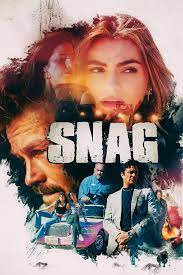
SNAG
US, 2023, 86 minutes, Colour.
Ben Milliken, Sofia Castro, Jonny Beauchamp, Ana Ortiz, Jeanette
Aguilar Harris, Jaime Camil, Brandan Hudson, Michelle Ortiz,Conor Tillman.
Directed by Ben Milliken.
The original title of this short action adventure film was SNAG: THE FIRST CHAPTER – hopes for the commercial success of the film and openness to sequels.
The film is the work of actor Ben Milliken, born in the UK, brought up in Australia, in Australian media, a boxer for 10 years, moving to the US for a film and television career. He has produced this film, cowritten, is the director and the star. He has quite an agreeable screen presence.
This is a Mexican adventure, reminding audiences of some Robert Rodriguez films, El Mariachi. Some mention has been made of Quentin Tarantino – and his influence is very clear when the two hitmen arrive, in suits and ties, and have quite a long discussion, verbal sequences beloved by Tarantino.
A mood is set with the opening sequences, a musical score suggestion of the spaghetti westerns. Each of the characters is introduced visually, bright and elaborate colours.
The style of the screenplay, and its continually moving, with the title on screen, THEN to NOW and continual intermovement. Which means that the audience has to pay attention, discovering Snag, the central character, wounded, in a bar, Mexico, not speaking English, the reaction of the barman and hostility, a mysterious phone call, an elaborate fight with the customers, and the day being saved by the young woman, Valentina, attracted to Snag, firing into the air. She saves him.
The film makes a transition to the Now, with Snag working at a bar as security man. It is run by a brother and sister. He also has a caravan out near the ocean and seems content.
There are continual returns to the past, especially to Valentina’s mother, the ruthless cartel chief, Victoria. It has also revealed that she almost executed Snag as a failed drug runner but he escaped, she complaining always that he escapes. And, she is dismayed as her daughter is gunned down. She continues after Snag, everybody in her pay, a violent woman called the Reaper, the well-dressed twins, even the sister at the bar.
There are difficulties in the Now, a former friend and rival turning up, the brother and sister turning up with their limousine, then a shootout. And, surprisingly, hints of the survival of Valentina – and an important twist so that if Snag survives and if there is a sequel, there is the basis for a ready-made plot.
Ferrante Fever
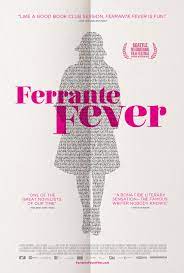
FERRANTE FEVER
Italy, 2017, 74 minutes, Colour.
Directed by Giacomo Durzi.
Elena Ferrante is an Italian novelist, letter writer, column writer, essayist. Her first novel was published in 1992. She has been translated into almost 50 languages.
This film opens with the testimony by Hillary Clinton about her compulsive reading of the four Neapolitan novels and having to ration her time. An arresting comment moving into an arresting documentary.
On the one hand, there are quite a number of testimonies from writers and critics and film makers praising the novels. On the other hand, there is the mystery concerning her identity which has been kept secret for many decades.
Jonathan Franzen leads the commentaries by fellow-writers. For those who enjoy analyses of novels and the perspectives of writers, there is much to enjoy in this film, quite some in-depth discussion of the books, the characters, the nature of the writing, the explorations of human nature, relationships. Two Italian directors explaining their adaptations of Ferrante’s novels, one of them, Mario Martone, explaining the notes that the author made for his screenplay.
Since this documentary came out in 2017, actress turned writer-director, Maggie Gyllenhaal, adapted the novel The Lost Daughter for the screen. And, since 2018, HBO have created for miniseries on the Neapolitan quartet.
Significant in the discussion about the novels and their meanings of the contributions by the translator, Anna Goldstein.
There is quite a lot of discussion about the identity of the writer, a great deal of comment about the privacy, its protection for decades, some sensationalist speculation. While the author does not appear in public, there is verbal correspondence, letters, and the publication of her columns and essays, explorations of novel writing and literature.
The documentary is definitely on the side of the author, some viewers complaining about the lack of negative perspectives.
However, as a documentary exploring literature, writers, commentary, in 74 minutes, it is quite intriguing.
Dolly Parton's Magic Mountain Christmas
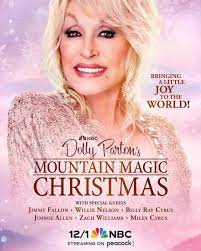
DOLLY PARTON'S MOUNTAIN MAGIC CHRISTMAS
US, 2022, 85 minutes, Colour.
Dolly Parton, Tom Everett Scott, Angel Parker, Mary Lane Haskell, Jimmy Fallon, Willie Nelson, Billy Ray Cyrus, Jimmy Allen, Zach Williams, Miley Cyrus, Cassie Parton Griffiths, Rachel Parton George.
Directed by Joe Lazarov.
Everybody knows Dolly Parton. Most audiences love Dolly Parton. At the opening of this television special, she sings I will always love you and 9 to 5 as an encore. She is in Tahoe, looking at the snow, getting a bright idea that she should do a special Christmas program at Dollywood.
So, this is a film of putting on a show. Tom Everett Scott is her producer, looking very uneasy at times, clashing with the substitute choreographer, Angel Parker (though reconciling with her, brought up an orphan, inviting her to Christmas with his family). There are scenes with agents, with producers, with screenwriters, choreographers. And, there is the tension of not being ready, especially on the day of the show, rehearsals and getting further and further behind in time. And some squabbles. And Dolly intervening.
However, scattered throughout this brief narrative is a huge range of songs.
Dolly Parton emerges as a strongly committed Christian, appealing to her audiences, to evangelical Christians throughout the US and the world. There is a crib sequence, Mary dancing, there is a vigorous rendition of Go Tell it on the Mountain, a song about Jesus, He is Here, a song about talking to God, its lyrics gently expressing many God questions, and, with a threat by an evil spirit destroying the spirit of Christmas, and in appearance of Satan and Dolly’s stance song, Go to Hell.
This bringing of the devil into the Christmas story upset many devout Christian audiences.
There are a number of fantasy sequences, especially when her grandnephew appears. And she has apparitions from wise singing advisers who accompany her in song, especially Willie Nelson, a duet with Jimmy Fallon, with Billy Ray Cyrus, and, a song with his daughter, Miley Cyrus.
Obviously, all’s well that ends well, and there is a spectacular finale.
This is a film for all Dolly Parton’s fans – with the caution of those who didn’t like the devil song.
Vincent and Hoa at Wadeye
Vincent and Hoa at Wadeye

Part of MSC formation is mission experience in the NT. Vincent and Hoa are in Wadeye.
Hoa writes: The first week in Wadeye has been very rewarding.
Although, I must admit, the plane ride to Wadeye was a bit turbulent due to a sudden storm, and everyone surely breathed a sigh of relief as the plane safely touched down with Vincent kissing the ground thanking for the safe flight. Memories of Pope John Paul II arriving...

We started our time with a school tour, a smoking ceremony at deacon Boniface’s place,

and attended Mass in Wadeye and Palumpa. Getting to the local supermarket most days and getting to know the community as well.

Vincent and I have also started our work with Orange Sky. Each of us drives a van equipped with washing machines and dryers to different houses. Our main focus is guiding people through the laundry process. most importantly, having conversations with them while they are waiting for the laundry. It's incredible how this organisation enables us to connect with people. Thanks to Leo for introducing us to this initiative.

Over the weekend, we had some good time with the people, who taught us to catch mud crabs and snails. The kids help Vincent and me to be inducted to the community as well.

Elstree Calling
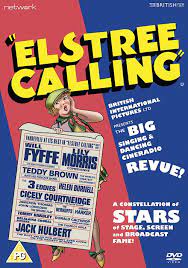
ELSTREE CALLING
UK, 1930, 86 minutes, Black and white.
Tommy Handley, Gordon being, Teddy Brown, Helen Burnell, Donald Calthorpe, the Charlot Girls, Cicely Courtneidge, Will Fyffe, Gordon Harker, Jack Hulbert, Hannah Jones, John Longden, Anna May Wong.
Directed by Adrian Brunell, Alfred Hitchcock.
This is something of an antique. Immediately, it is an opportunity to see work at Elstree Studios in the early 1930s, not just for filmmaking but also for the advent of television, the science behind television and its broadcast, the role of the MC, the various acts and their staging, comedy, music, glamour, dance, Shakespeare, farce… It does all look a bit antiquated now and there are various aspects which 21st-century standards would be critical of, the very talented dancers but there appearing in Black Face, the touch of sexual harassment and comment,
There are also some comic sequences at homes with the television set is playing up and another successful.
But, the main reason for seeing this film is that the acts were directed by Alfred Hitchcock. He had been very successful with his silent films, his cinema techniques, storyboarding, inventiveness, his exploration of themes, the transition from silent to talky, and his initial thrillers.
There is very little characteristic Hitchcock material here but, the fact is that he is credited as directing the acts and, whether he was happy to acknowledge this or not, Elstree Calling is part of his cinema career.

